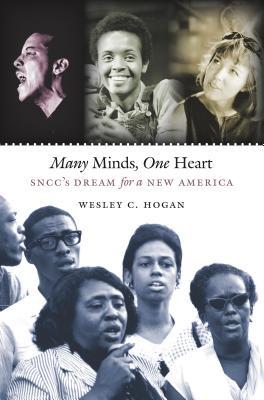
Book
Many Minds, One Heart: Sncc's Dream for a New America
(Write a Review)
Paperback
$45.00
As Hogan chronicles, the members of SNCC created some of the civil rights movement's boldest experiments in freedom, including the sit-ins of 1960, the rejuvenated Freedom Rides of 1961, and grassroots democracy projects in Georgia and Mississippi. She highlights several key players--including Charles Sherrod, Bob Moses, and Fannie Lou Hamer--as innovators of grassroots activism and democratic practice.
Breaking new ground, Hogan shows how SNCC laid the foundation for the emergence of the New Left and created new definitions of political leadership during the civil rights and Vietnam eras. She traces the ways other social movements--such as Black Power, women's liberation, and the antiwar movement--adapted practices developed within SNCC to apply to their particular causes. Many Minds, One Heart ultimately reframes the movement and asks us to look anew at where America stands on justice and equality today.
Between 1960 and 1965, the Student Nonviolent Coordinating Committee (SNCC) created some of the civil rights movement's boldest experiments in freedom. Wesley Hogan explores how the organization fostered so much social change in such a short time. She offers new insights into the internal dynamics of SNCC as well as the workings of the larger civil rights movement of which it was a part. Beyond the movement itself, SNCC laid the foundation for the emergence of the New Left and created new definitions of political leadership during the civil rights and Vietnam eras. Hogan traces the ways other social movements--such as Black Power, women's liberation, and the antiwar movement--adapted practices developed within SNCC to apply to their particular causes.
As Hogan chronicles, the members of SNCC created some of the civil rights movement's boldest experiments in freedom, including the sit-ins of 1960, the rejuvenated Freedom Rides of 1961, and grassroots democracy projects in Georgia and Mississippi. She highlights several key players--including Charles Sherrod, Bob Moses, and Fannie Lou Hamer--as innovators of grassroots activism and democratic practice.
Breaking new ground, Hogan shows how SNCC laid the foundation for the emergence of the New Left and created new definitions of political leadership during the civil rights and Vietnam eras. She traces the ways other social movements--such as Black Power, women's liberation, and the antiwar movement--adapted practices developed within SNCC to apply to their particular causes. Many Minds, One Heart ultimately reframes the movement and asks us to look anew at where America stands on justice and equality today.
Between 1960 and 1965, the Student Nonviolent Coordinating Committee (SNCC) created some of the civil rights movement's boldest experiments in freedom. Wesley Hogan explores how the organization fostered so much social change in such a short time. She offers new insights into the internal dynamics of SNCC as well as the workings of the larger civil rights movement of which it was a part. Beyond the movement itself, SNCC laid the foundation for the emergence of the New Left and created new definitions of political leadership during the civil rights and Vietnam eras. Hogan traces the ways other social movements--such as Black Power, women's liberation, and the antiwar movement--adapted practices developed within SNCC to apply to their particular causes.
Paperback
$45.00